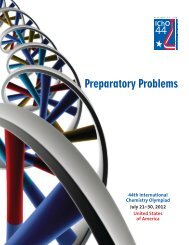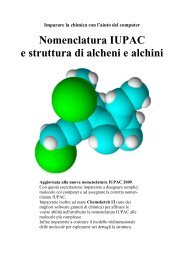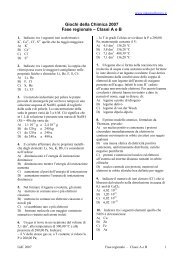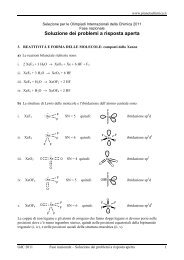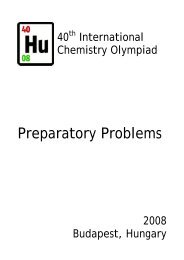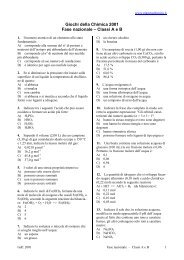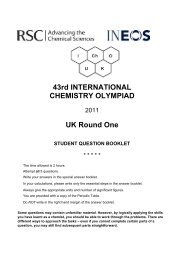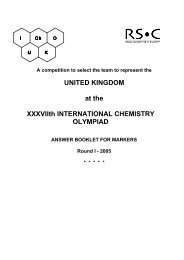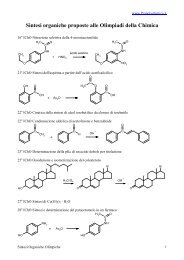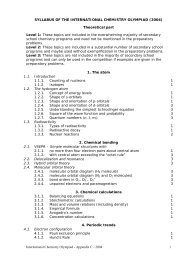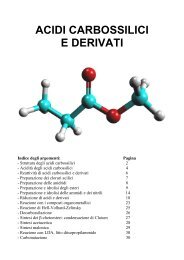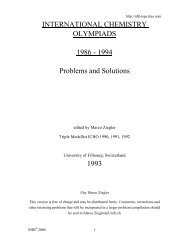Theoretical Test
Theoretical Test
Theoretical Test
You also want an ePaper? Increase the reach of your titles
YUMPU automatically turns print PDFs into web optimized ePapers that Google loves.
7. Hydrogen Economy (4 pts)Hydrogen is more energy-dense than carbon, by mass. Thus, historicallythere has been a move toward fuel with higher hydrogen content: coal → oil→ natural gas → hydrogen. Cost-effective production and safe storage ofhydrogen are two major hurdles to the successful inauguration of a hydrogeneconomy.7-1. Consider hydrogen in a cylinder of 80 MPa at 25 o C. Using the ideal gaslaw, estimate the density of hydrogen in the cylinder in kg/m 3 .7-2. Calculate the ratio between heat generated when hydrogen is burnedand heat generated when the same weight of carbon is burned. Thedifference comes to a large extent from the fact that the most abundantisotope of hydrogen has no neutron and hydrogen has no inner electronshell. ∆H o f [H 2 O(l)] = -286 kJ/mol, ∆H o f [CO 2 (g)] = -394 kJ/mol.7-3. Calculate the theoretical maximum work produced by the combustion of1 kg hydrogen (a) from the electric motor using hydrogen fuel cell and (b)from the heat engine working between 25 o C and 300 o C. The efficiency(work done/heat absorbed) of an ideal heat engine working between T coldand T hot is given by [1 – T cold /T hot ].S o 298[H 2 (g)] = 131 J/(K mol)S o 298[O 2 (g)] = 205 J/(K mol)S o 298[H 2 O(l)] = 70 J/(K mol).If the fuel cell is working at 1 W and the standard potential difference,how long will the electric motor run at what current?11




